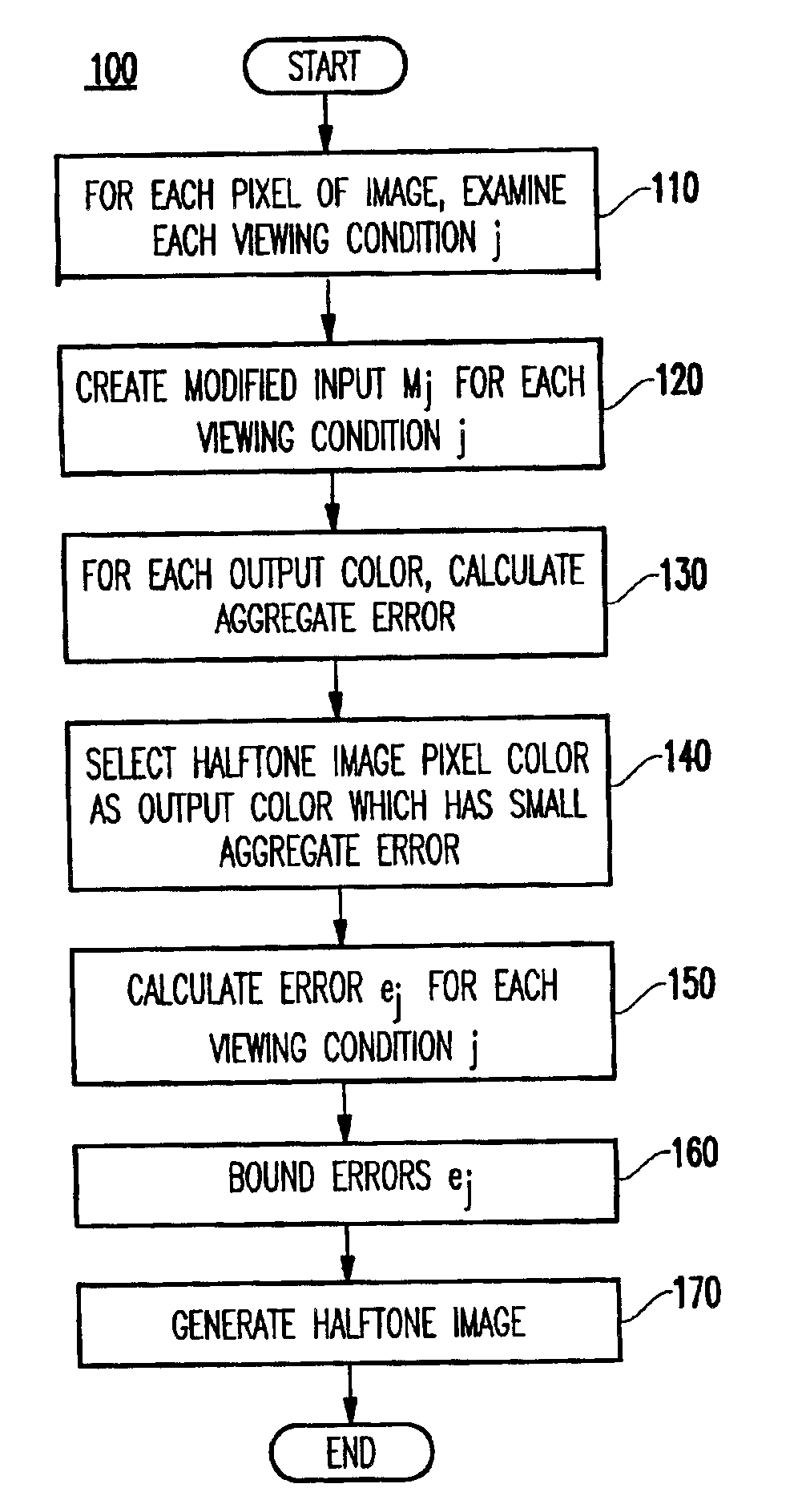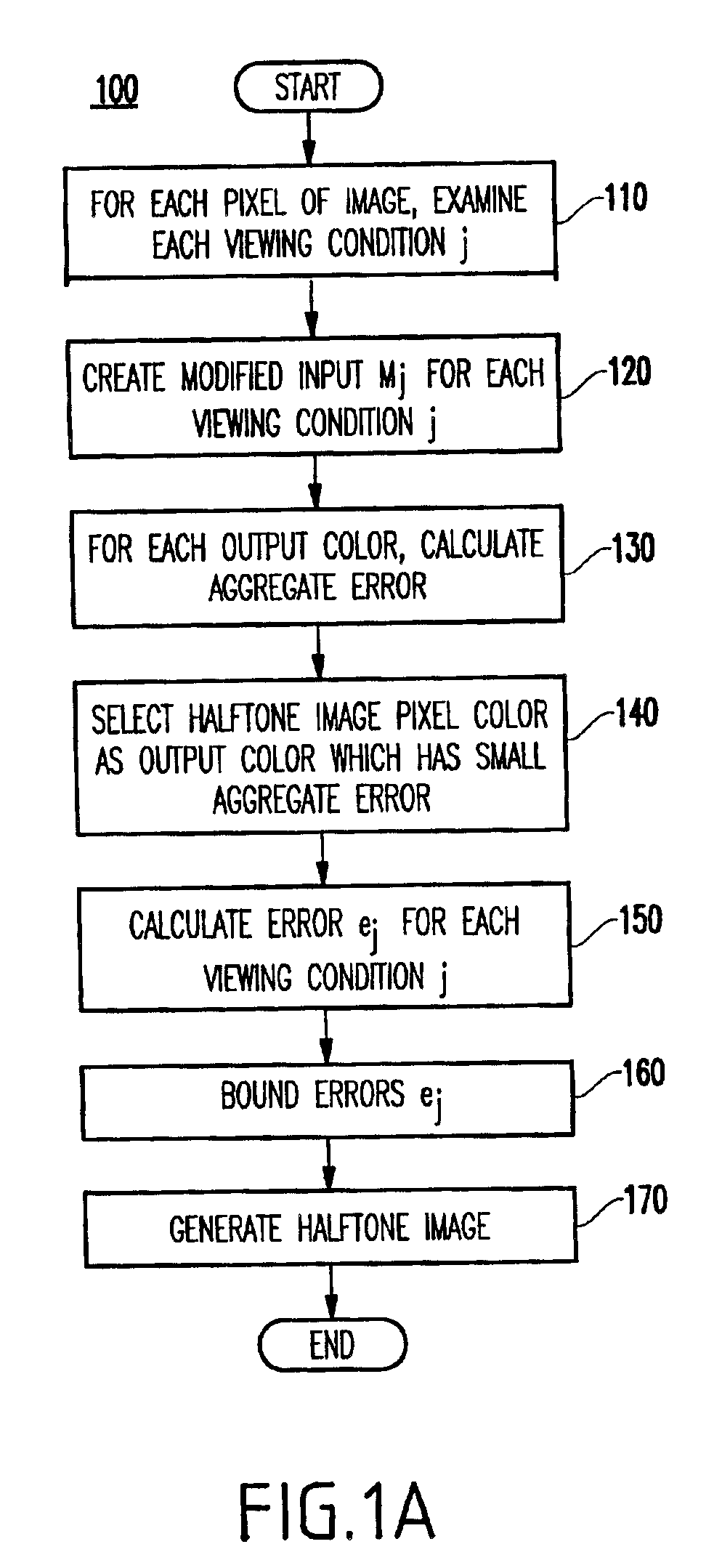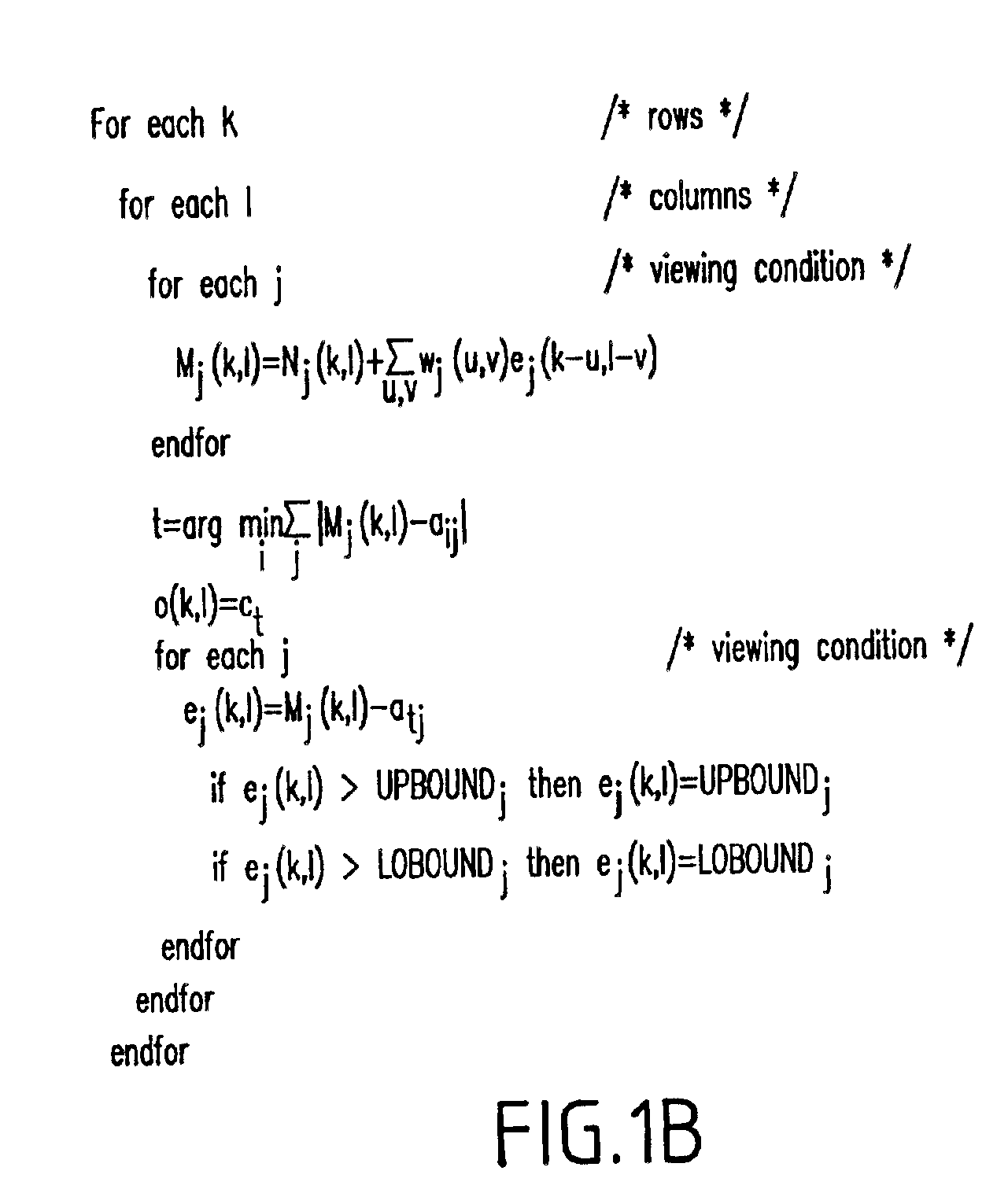Method and system for error diffusion with a plurality of error measures
a technology of error diffusion and error measurement, applied in the field of halftoning techniques of printers and displays, can solve the problems of generating images that look the same, not true for all printing technologies and displays, etc., and achieve the effect of minimizing errors at each pixel
- Summary
- Abstract
- Description
- Claims
- Application Information
AI Technical Summary
Benefits of technology
Problems solved by technology
Method used
Image
Examples
Embodiment Construction
Referring now to the drawings, and more particularly to FIGS. 1A-5, there are shown preferred embodiments of the method and structures according to the present invention.
FIG. 1A illustrates a flow chart of the inventive method 100, and FIG. 1B illustrates the inventive method in pseudo-code form.
In FIG. 1A-1B, there are three loops in the process such that a loop is made through each column k and rows 1 of the image (e.g., through each pixel).
That is, in step 110, for each pixel of the image (e.g., at the intersection of the columns and rows), a loop is made through each viewing condition. In the example of FIGS. 2A-2B, there are only two viewing conditions shown for simplicity (e.g., one showing the baboon and one showing the woman).
In step 120, for each viewing condition, a modified input Mj is created. In error diffusion, instead of using an input, a modified input is used (created) by adding to the current input pixel N a weighted sum (wj) of errors (ej) that have been generated...
PUM
 Login to View More
Login to View More Abstract
Description
Claims
Application Information
 Login to View More
Login to View More - R&D
- Intellectual Property
- Life Sciences
- Materials
- Tech Scout
- Unparalleled Data Quality
- Higher Quality Content
- 60% Fewer Hallucinations
Browse by: Latest US Patents, China's latest patents, Technical Efficacy Thesaurus, Application Domain, Technology Topic, Popular Technical Reports.
© 2025 PatSnap. All rights reserved.Legal|Privacy policy|Modern Slavery Act Transparency Statement|Sitemap|About US| Contact US: help@patsnap.com



